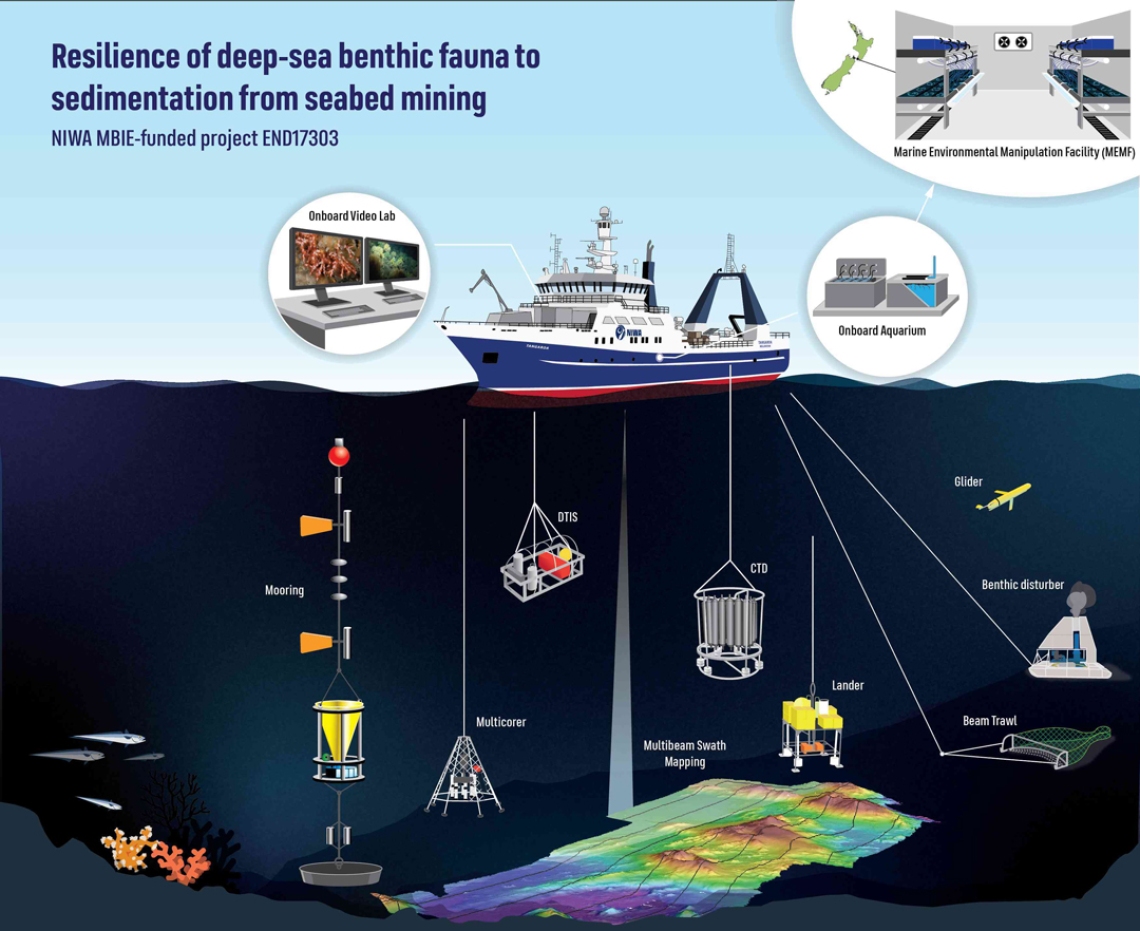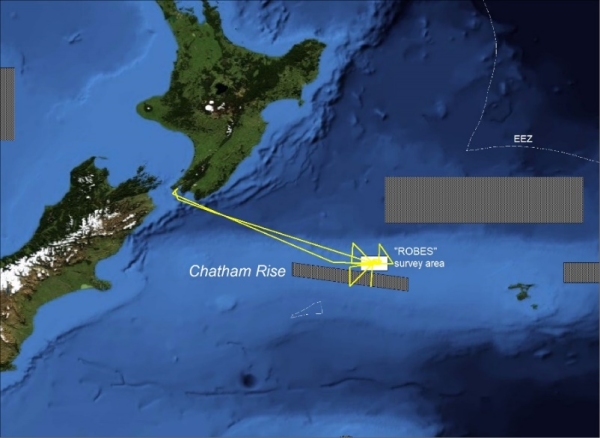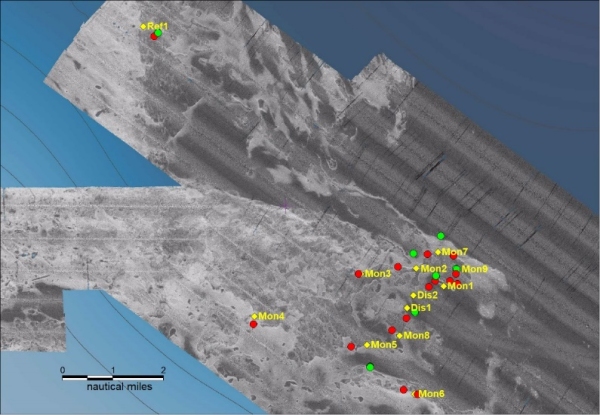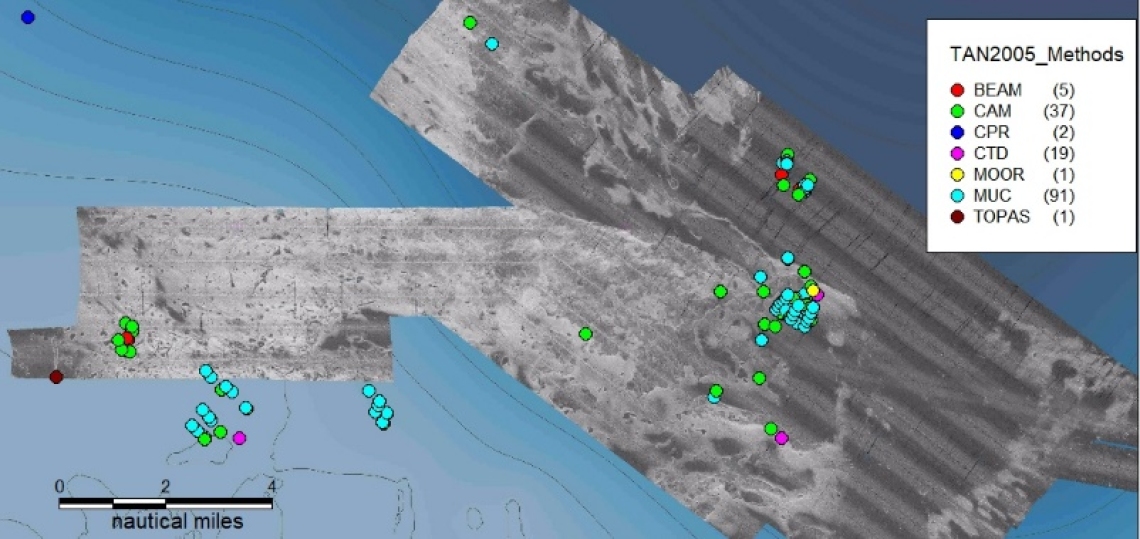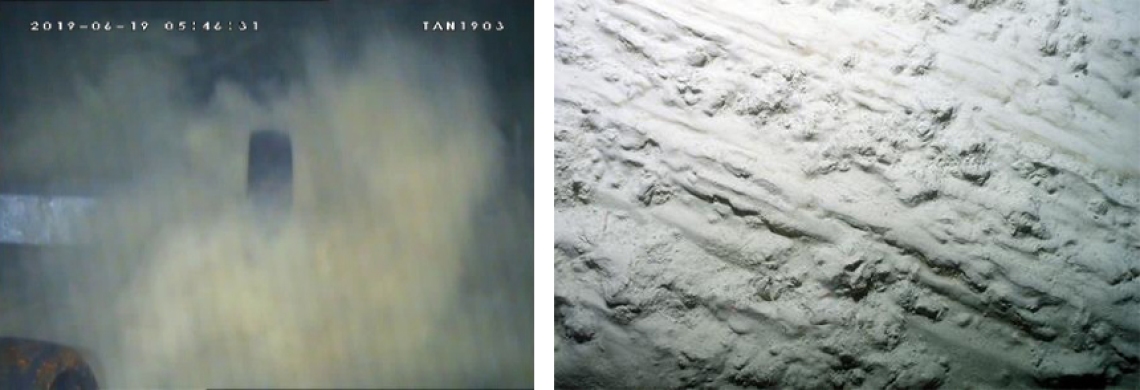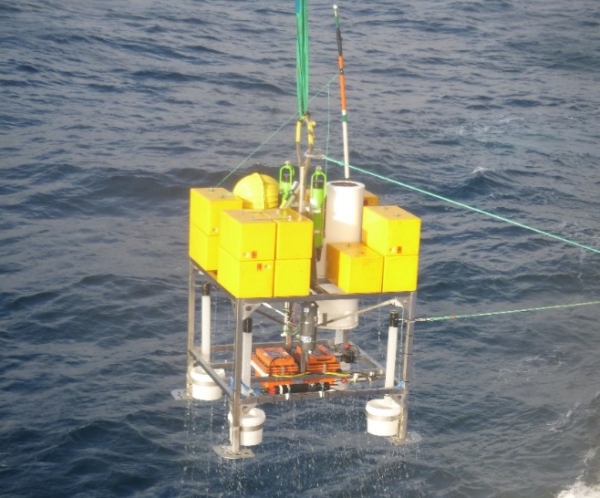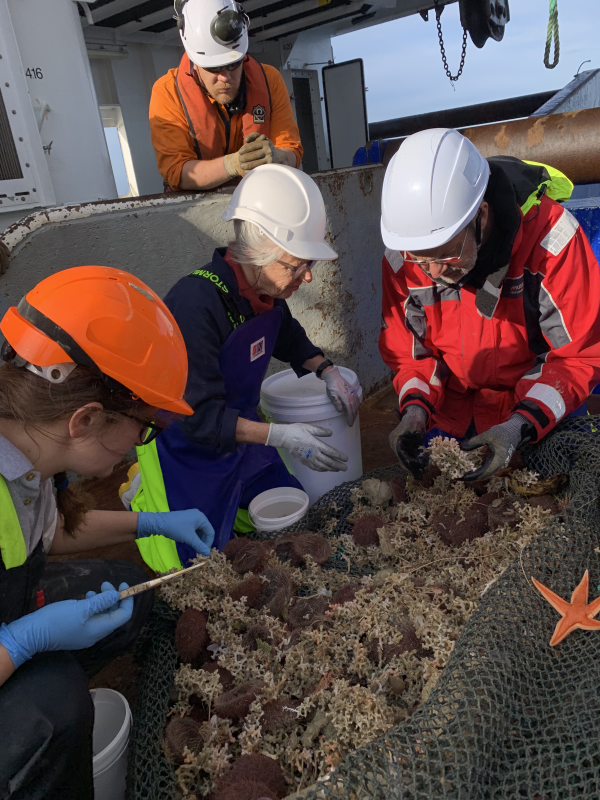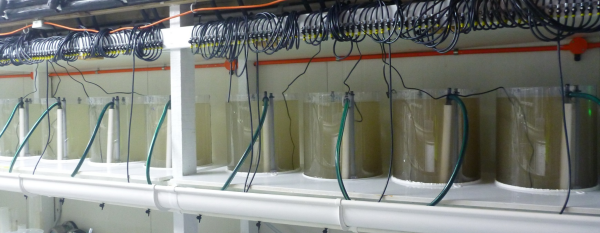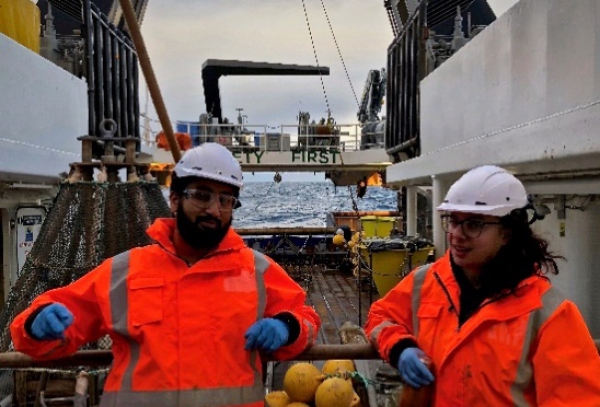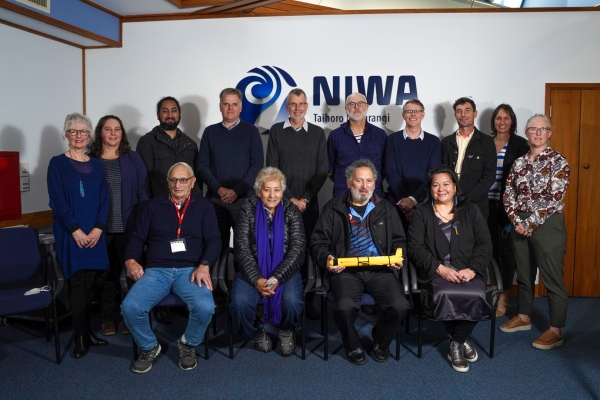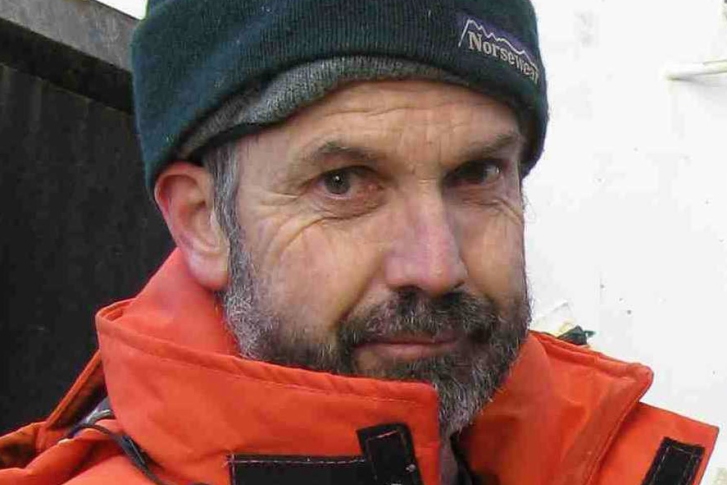The ROBES (Resilience of benthic communities to the effects of sedimentation) programme is funded by MBIE and runs from 2016 to 2021. The project involves a strong multidisciplinary team of scientists from NIWA, Victoria University of Wellington and the University of Waikato. It also links with European research initiatives.
The issue
Currently the effects of sedimentation on life in and on the deep-seabed are not well understood.
This programme looks at the impacts of sediment plumes (clouds of sand and other particles) created by disturbance to the seafloor and the discharge of processed waters. Understanding such impacts in the deep ocean is challenging but is important for evaluating the effects on the environment of human activities and developing options to manage them.
The science approach
The research combines field survey experimentation and in situ observations with laboratory-based experiments. This complementary approach will provide information on the concentrations and distances over which impacts of suspended sediment on faunal communities become ‘ecologically significant’. The work is designed to determine the extent and persistence of sediment plumes, the immediate impact and subsequent recovery of the seafloor environment exposed to these plumes, and effects of suspended and settled sediment effects on the functioning of ecologically significant species.
Field work at sea
The field work began with a benthic disturbance survey in May-June 2018 on the Chatham Rise using NIWA’s research vessel Tangaroa. Subsequently a further two monitoring surveys were carried out in 2019 and 2020 in the same area.
On each voyage the effects on the animal community structure at the disturbance site and at increasing distances from the area of impact were examined by pre-and post-disturbance sampling using shipboard and moored instrumentation (including landers with sediment traps and optical sensors), sediment cores, and seafloor imagery.
Baseline data were collected on bathymetry, topography, water column characteristics (using the vessel sensors, moored current profilers, and an underwater glider), sediment composition, and faunal community structure and abundance prior to disturbance, and then up to three times post-disturbance.
Experimental work on the properties of sediment cores was also carried out in onboard laboratories.
In the laboratory
The laboratory-based side of the programme has involved holding live deep-sea corals and sponges in tanks and exposing them to various levels and durations of suspended particle loads in the water to try and identify acute and lethal thresholds as well as chronic effects of suspended sediment. Techniques were developed in an associated project as part of the Sustainable Seas National Science Challenge. The responses measured included physical impacts, feeding and respiration efficiency, behaviour and physiological responses such as mucous production. This laboratory work began in the work in 2019 with samples also collected on the third survey.
The three Voyage Reports and the Information Flyers at the end of this page describe the research surveys and some provisional results to date.
Survey area
Survey gear
The physical disturbance in the 2018 survey was carried out with a “Benthic Disturber” designed by NOAA in the USA in the 1990s and used previously in 6 disturbance surveys in the eastern Pacific Ocean. The benthic disturber did not cope well with the heavy sandy/silty sediment on the Chatham Rise compared with abyssal muds, and so in 2019 a modified tyne harrow plough (called SCIP: Sediment Cloud Induction Plough) was used.
Benthic fauna
Laboratory experiments
A demonstration of deep-sea stony branching coral larvae Goniocorella dumosa movement: beating cilia with internal mesenteries visible. Observed 17 September 2020. [NIWA]
A demonstration of deep-sea stony branching coral larvae Goniocorella dumosa directional swimming movement. Observed 17 September 2020. [NIWA]
Download: A dataset of the deep-sea stony branching coral larvae Goniocorella dumosa observations [XLS 27 KB]
Engagement with Māori
Communication with tangata whenua is integral to this research programme.
Facilitated by NIWA’s Te Kūwaha (National Centre of Māori Environmental Research) Group, the project Leader Malcolm Clark and NIWA Pou Ārahi Lee Rauhina-August visited Wharekauri/Rēkohu/Chatham Islands in 2018 and again in 2019 with NIWA scientist Joanne O’Callaghan to outline the project, methodology and opportunities for tangata whenua to be involved in this research.
Meetings were also held with Ngāi Tahu. Such hui and information exchange using flyers (see below) help researchers better understand the viewpoints and concerns of Māori and this engagement is on-going.
As a result of these interactions, two tangata whenua representatives participated in the survey that took place in June 2019.
ROBES End-users webinar, 30 June 2022 - presentations & recording
Resilience of deep-sea benthic communities to the effects of sedimentation (ROBES) research webinar, 30 June 2022 [PDF 16.26MB]
ROBES webinar, 30 June 2022 recording (Vimeo)
Stakeholder input
The research programme also has a user advisory group that provides feedback on the research and ensures the work remains relevant for application to stakeholders. The group has representatives from government agencies, the fishing industry, a commercial mining company, the minerals industry, an environmental group and the research team.
Voyage reports
ROBES Voyage Report 1 Nov 2018 [5MB]
ROBES Voyage Report 2 Nov 2019 [PDF 6.1MB]
Robes Voyage Report 3 March 2021 [PDF 7MB]
Information flyers
Information Flyer April 2019 [PDF 448 KB]
Information Flyer August 2018 [PDF 200KB]
Information Flyer September 2018 [PDF 200KB]
Information Flyer No 4 - engagement 20 Nov 2019 [PDF 500KB]
Information Flyer No 5 - 20 Nov 2019 [PDF 378KB]
Information Flyer No 6 - 1 Mar 2020 [PDF 370KB]
Information Flyer No 7 - 22 June 2020 [PDF 450 KB]
Information Flyer No 8 - 22 June 2020 [PDF 350KB]
Information Flyer No 9 - 23 March 2021 [PDF 277KB]
Information Flyer No 10 - June 2021 [PDF270KB]
Information Flyer No 11 - Mar 2022 [PDF300KB]
Presentations
Sea-floor species health and survival to underwater 'sediment clouds'. Webinar presented to Sustainable Seas National Science Challenge, 27 August 2020. Clark, M.R., Cummings, V., Beaumont, J., Mobilia, V., Bell, J., Barr, N., Tracey, D., McGrath, E. (2020). [PDF 10MB]
Dynamic seafloor processes within the Subtropical Frontal Zone on the Chatham Rise and implications for regional sediment and organic carbon budgets. Nodder, S., Clark, M., O’Callaghan, J., Leduc, D., Hickey, C., Rowden, A., Eager, C., Hale, R., Gerrin, P., Price, O., Elliott, F., Searson, S., Deppeler, S., Frontin-Rollet, G., Ovenden, R. , Christchurch, New Zealand, November 2020. [PDF 2.1MB]
Ecotoxicity and Biogeochemical assessment of deep-sea mine sediments. SETAC. Darwin, Australia. July 2019. Hickey, C.W., Frontin-Rollet, G., Eager, C., Handler, M., Wysoczanski, R.J. (2019). [PDF 3.3MB]
Emerging results from the Chatham Rise on the impacts of seabed disturbance. Presented to NZMSS, July 2021. Clark, M., Nodder, S., O’Callaghan, J., Leduc, D., Cummings, V., Hickey, C., Beaumont, J., Collins, C., Eager, C., Hale, R., Mobilia, V., Murray, C., Rauhina-August, L., Rowden, A., Stewart, R., Tracey, D.
Sedimentation impacts on deep sea macrofauna communities of the Chatham Rise, New Zealand. Presented to NZMSS, July 2021. Murray, C., Clark, M., Nodder, S., Leduc, D., Hale, R., Rowden, A.
Other NIWA staff involved in the programme at various times include: Jennifer Beaumont, Mark Gall, Mark Hadfield, Neill Barr, Alan Hart.
External People Involved
James Bell – Victoria University of Wellington
Valeria Mobilia - Victoria University of Wellington
Chris Eager - Waikato Regional Council
Chris Hickey - Consultancy Firm
Conrad Pilditch – University of Waikato
Campbell Murray -- Fisheries New Zealand FNZ

